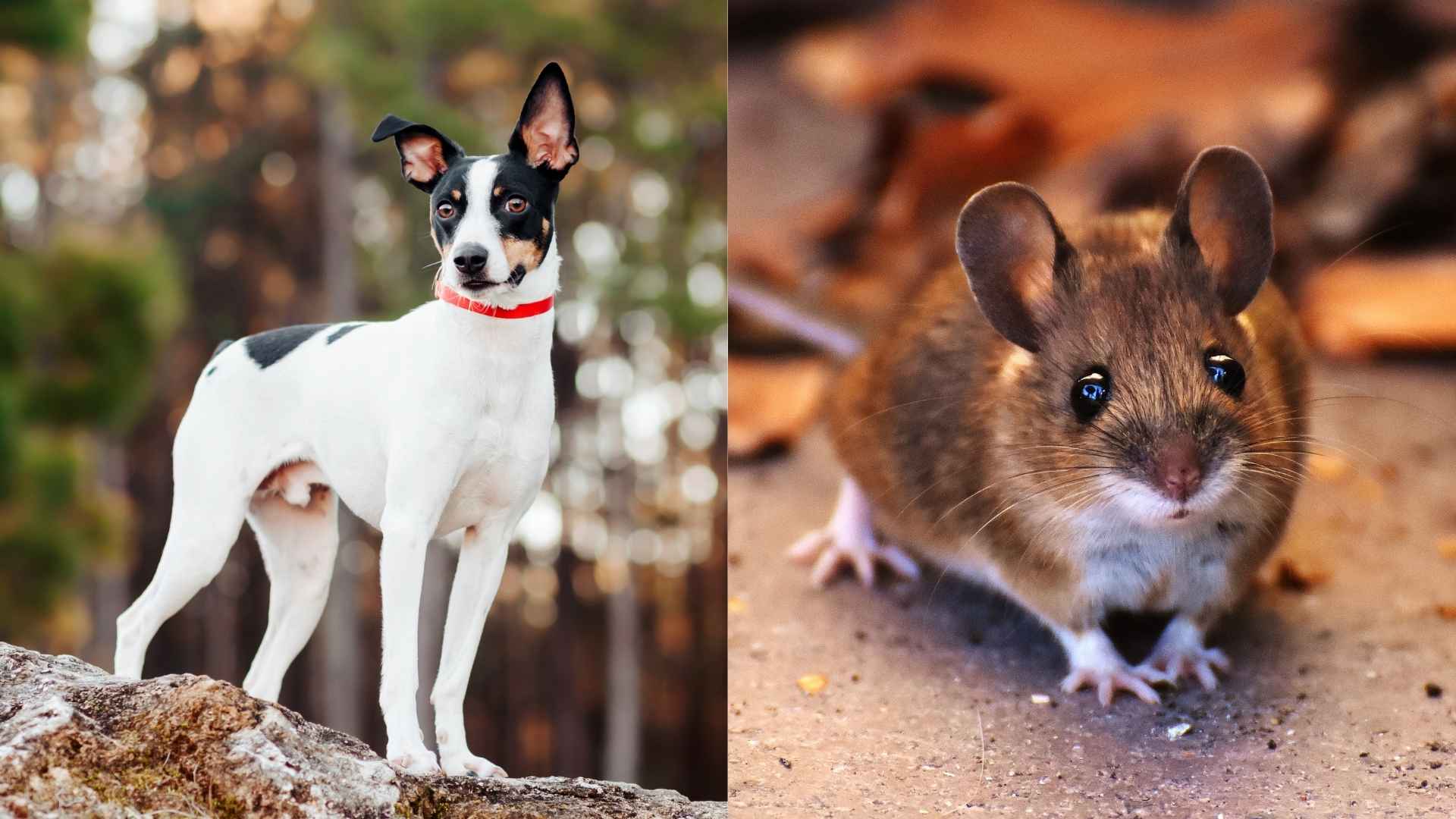Ratcatchers have long played a vital role in history, especially across Europe. While the tale of the Pied Piper of Hamelin may be folklore, it reflects the very real fears people once had of rats—creatures linked to disease and destruction, notably during the Black Death in the 14th century.
Fast forward to Victorian-era London, where overcrowded living conditions and poor sanitation made rats a public menace, sparking the rise of professional ratcatchers. But it wasn’t just humans tackling the problem—certain small dog breeds became invaluable allies in the fight against vermin.
These agile, determined dogs, often called ratters, were bred specifically to track and hunt rodents from hard-to-reach places. Today, many of these breeds still carry that instinct, making them excellent companions for anyone dealing with unwanted pests. Let’s explore the top rat-hunting dog breeds and what makes them natural-born rodent chasers.
Rat Hunting Dog Breeds
1. Rat Terrier
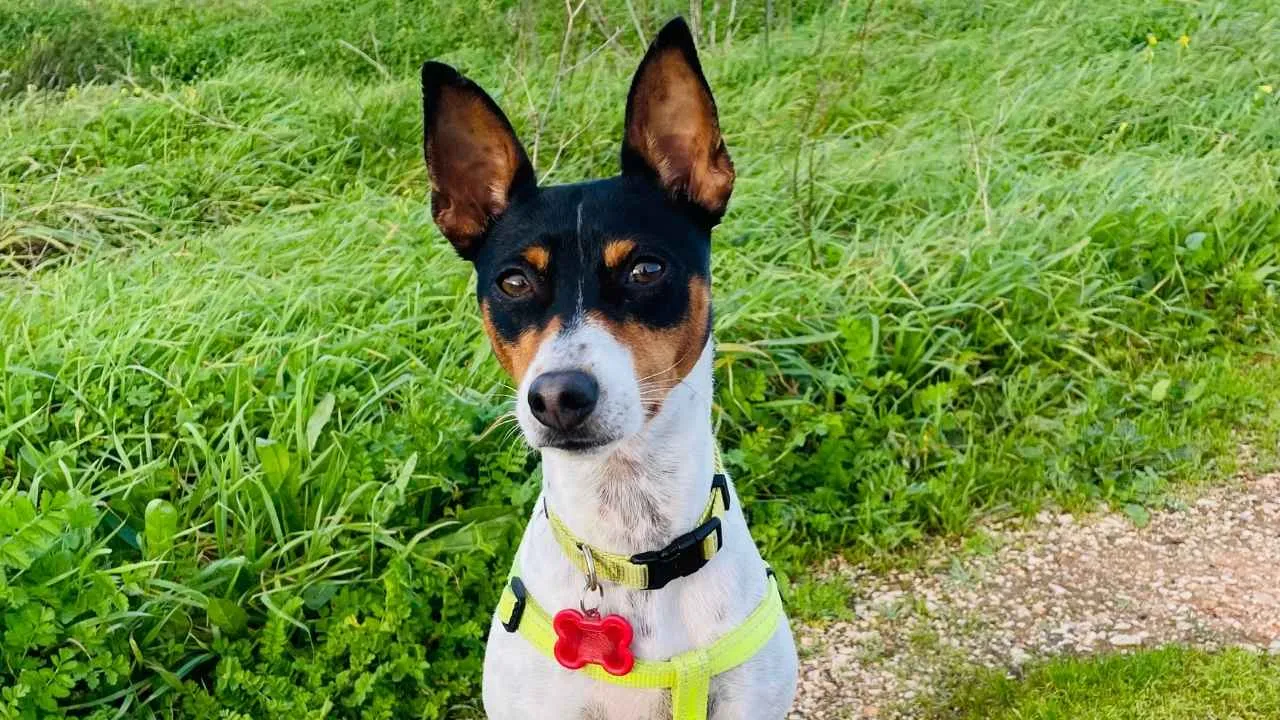
The Rat Terrier may be little, but it packs a punch of energy, smarts, and classic terrier grit. Bred in the U.S. for pest control and small game hunting, this spirited pup earned its name by being quick, clever, and relentlessly determined.
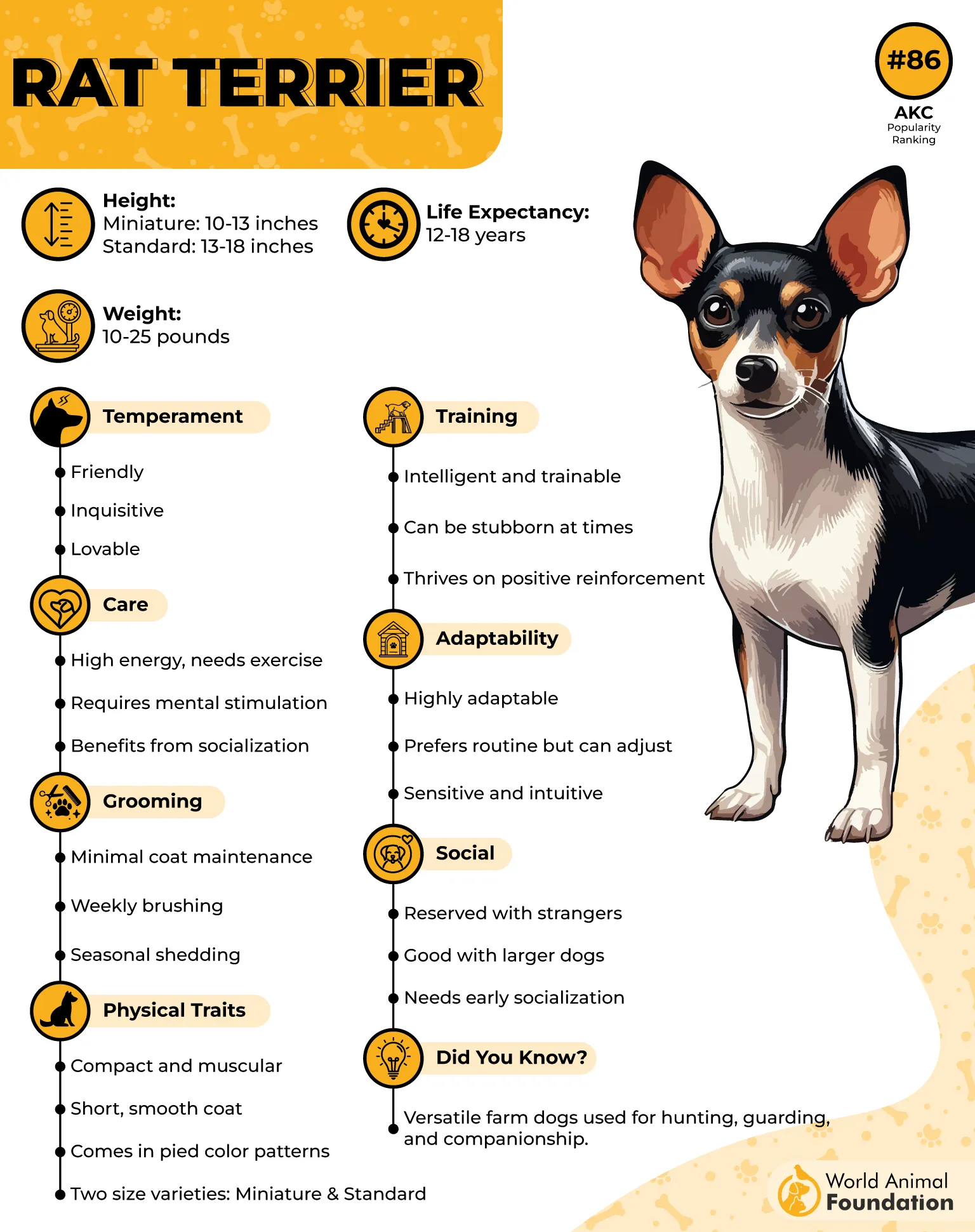
With a sleek build and short, colorful coat, Rat Terriers are made for motion. They thrive on activity—agility, fetch, obedience games, you name it—and love a good challenge. Always eager to please, they’re affectionate dogs that shine brightest when given room to roam and tasks to tackle.
They’re natural watchdogs with a voice to match. While they can be loud, early training helps keep it in check. Still, what they bring in noise, they make up for in humor and heart. One moment they’re snuggled on your lap, the next they’re chasing a bug—or plotting a snack heist.
With their bold spirit and endless enthusiasm, Rat Terriers are as lovable as they are lively. They may test your patience now and then, but they’ll win you over with loyalty, smarts, and undeniable charm.
A Reminder:
Like many terriers, digging is second nature, so your garden may need some supervision. These dogs are also known for their high jumps and occasional escape artistry, so secure fencing is essential. Apartment living can work, but daily exercise and play are non-negotiable.
2. Cairn Terrier
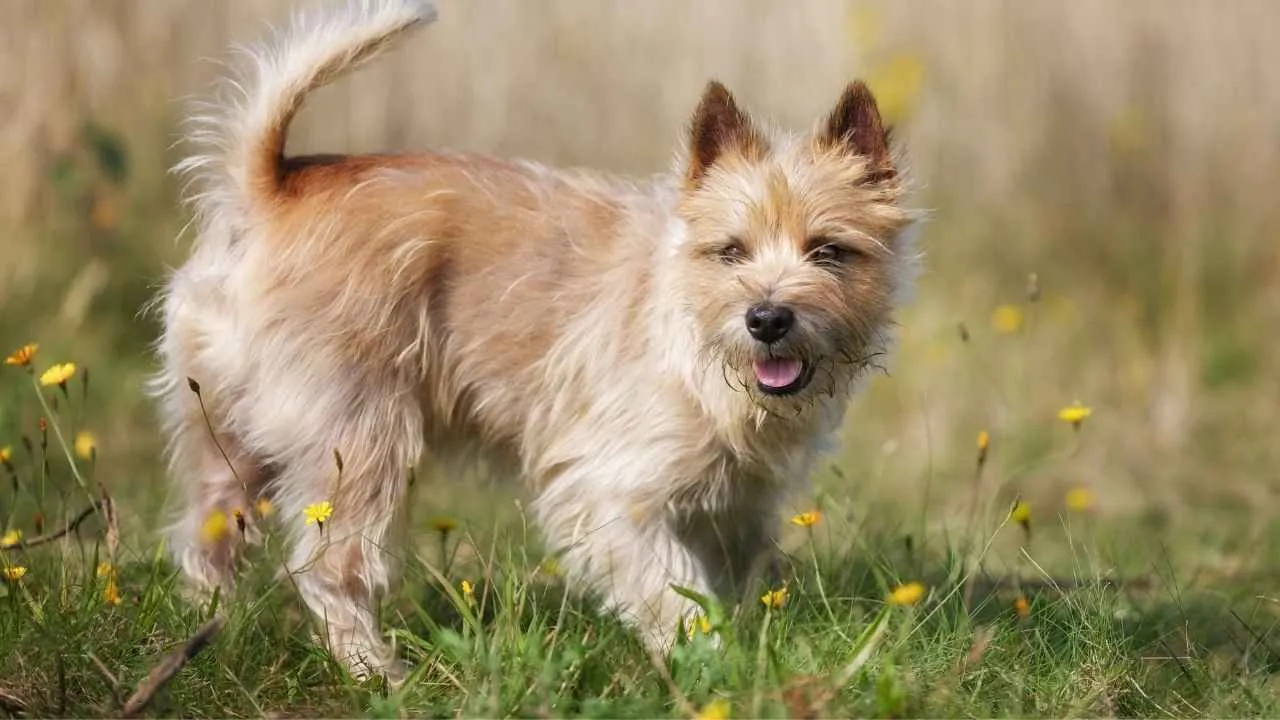
You might not recognize the name right away, but you’ve almost certainly seen a Cairn Terrier—especially if you’ve watched The Wizard of Oz. Dorothy’s scrappy sidekick, Toto, was one of these spirited little dogs.
Originally bred in Scotland to hunt vermin from rocky outcrops (called cairns), they’ve always been bold, clever, and full of personality.
With their short legs, wiry coats, and expressive eyes, Cairns are compact but never lacking in charm. Despite weighing under 15 pounds, they have big-dog energy and thrive on play and adventure. Whether in an apartment or a big backyard, what matters most is that they get plenty of mental and physical stimulation.
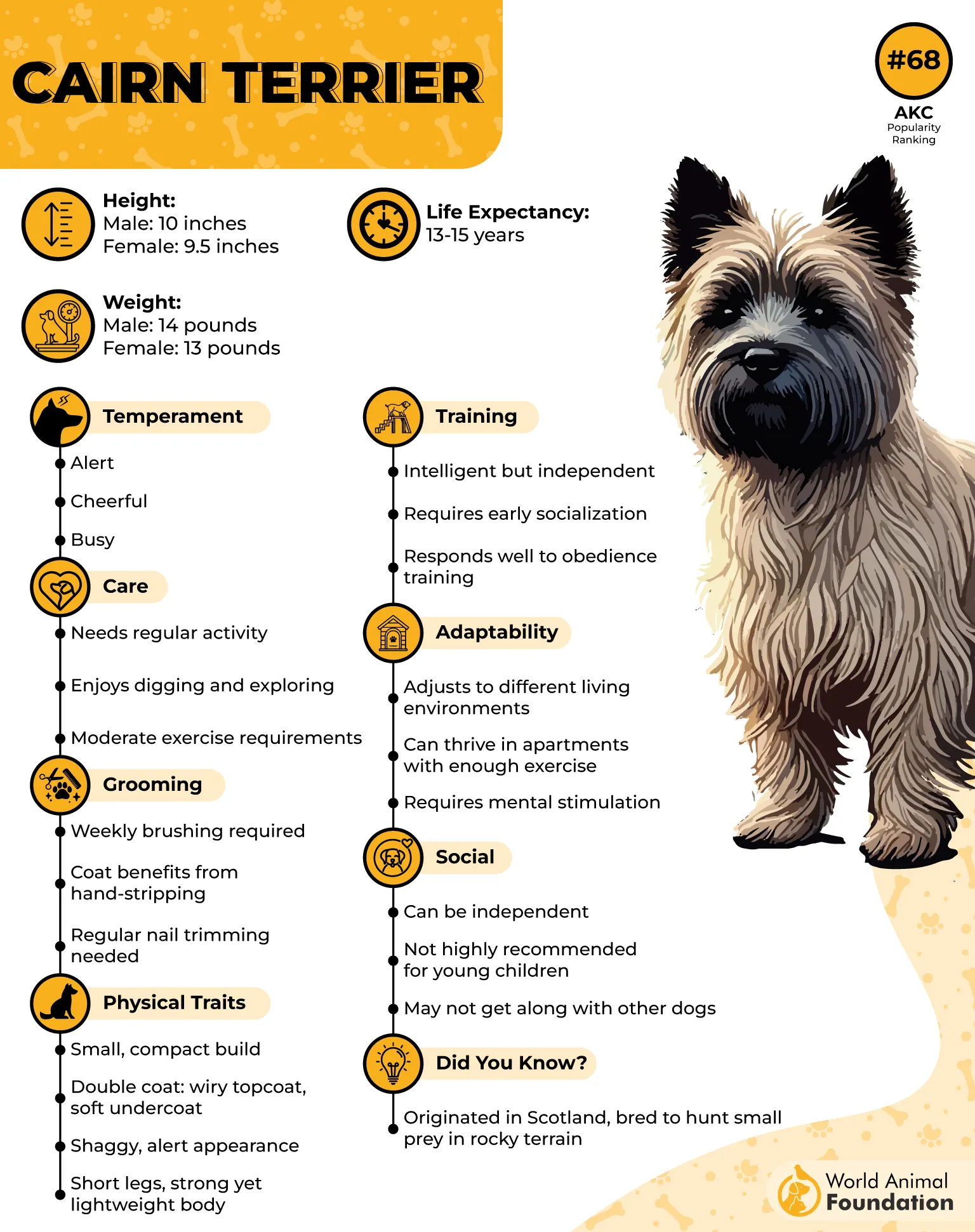
Independent and quick-thinking, Cairns bring classic terrier traits to the table—curiosity, determination, and a love of digging. They’re natural explorers, so fenced yards are best, and leashes are a must during walks. Give them a moment of freedom, and they’ll happily chase anything that moves.
Training a Cairn can be a delightful challenge. They’re sharp and eager to engage but won’t respond well to harsh discipline. Positive reinforcement works best, especially when paired with variety and fun. Once you earn their trust, they’ll impress you with how much they can learn, though they’ll never completely give up their wild streak.
These terriers are excellent family dogs—playful with kids and deeply attached to their people. Leave them alone too long, though, and mischief may follow. Bored Cairns are known to bark, chew, or dig, so companionship and activity are key to keeping them content.
3. Yorkshire Terrier
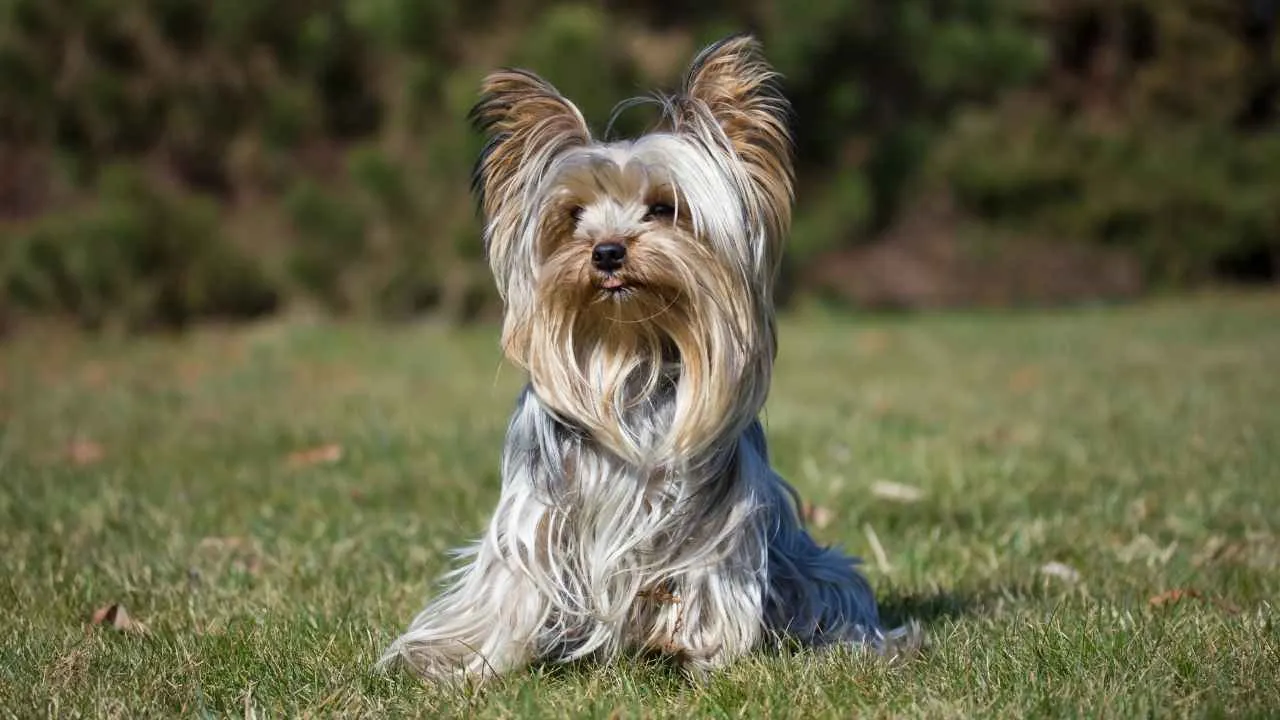
Once fearless ratters in 19th-century cotton mills and coal mines, Yorkshire Terriers have come a long way from their working-class roots. Originally bred to be pocket-sized pest hunters, these scrappy little dogs were tough enough to take on vermin yet small enough to ride in a miner’s coat.
Today, they’ve swapped grit for glam, earning their place as one of the most cherished toy breeds in the world.
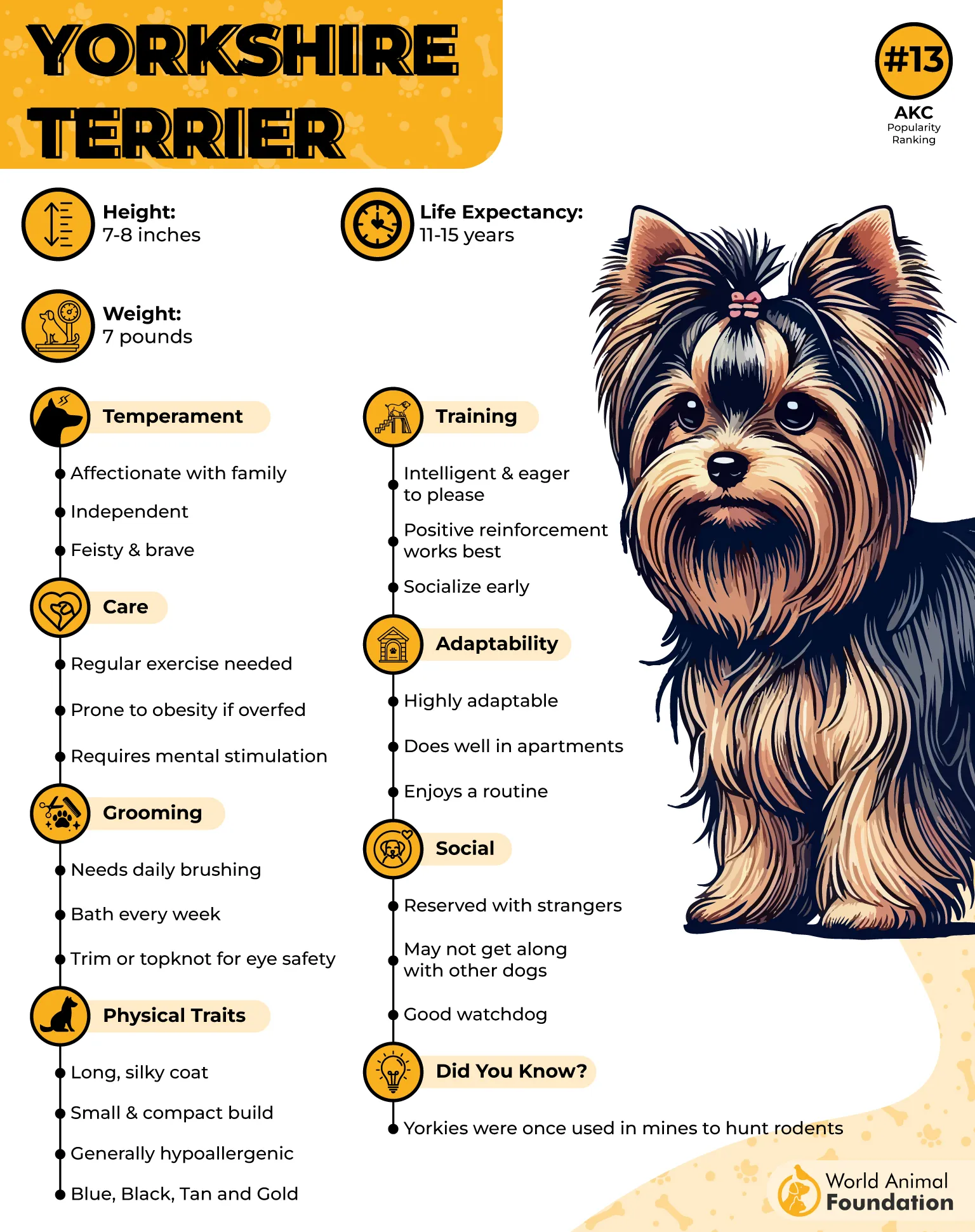
Don’t be fooled by their dainty looks—Yorkies are all terrier underneath. They’re bold, curious, and full of confidence, often forming strong attachments to their favorite humans. Their sharp minds make them quick learners, but they need consistent guidance; without it, they’ll happily run the show with a royal flair.
Their signature silky coat is one of their standout features, typically flowing in a steel-blue and tan cascade. While show dogs require meticulous grooming, a puppy cut keeps things more manageable while maintaining their charm. Either way, regular brushing is essential to prevent tangles.
Despite being a small dog breed, Yorkshire Terriers have boundless energy. They love being the center of attention and thrive on interaction—be it a walk around the block, a game of fetch, or tagging along for errands.
Though their bark is bigger than their bite, they make excellent little watchdogs, always quick to alert you to any unusual activity.
Did You Know?
As noted by Britannica, during World War II, a Yorkie named Smoky became a hero, surviving air raids and delivering critical communication lines through tight culverts. She earned eight battle stars and won hearts everywhere, helping bring attention to this spirited little breed post-war.
4. Norfolk Terrier
Don’t be fooled by their pint-sized build—Norfolk Terriers are fearless little dynamos with serious charm. Originally bred in the 1800s to hunt rats and flush foxes, they were once known as “Jones Terriers” in the U.S., thanks to the English horseman Frank “Roughrider” Jones. Tough, compact, and full of spirit, they’re tiny dogs with a massive heart.
These dogs shine with a mix of curiosity and courage. Always up for a walk or a backyard adventure, Norfolks are active without being overwhelming. They’ll bark when someone’s at the door, but they’re too sociable to play guard dog—wagging tails usually win out.
AKC states that with their fox-like faces, folded ears, and wiry coats in shades of red, black, and tan, wheaten, or grizzle, they’ve got a rugged yet adorable look. Weekly brushing keeps their scruff tidy and helps manage light shedding.
Despite their feisty streak, they’re great with kids, cats, and other dogs—especially when socialized early. A bit of stubbornness is part of the terrier package, but positive, consistent training works wonders. They’re vocal, but teachable, especially with early guidance.
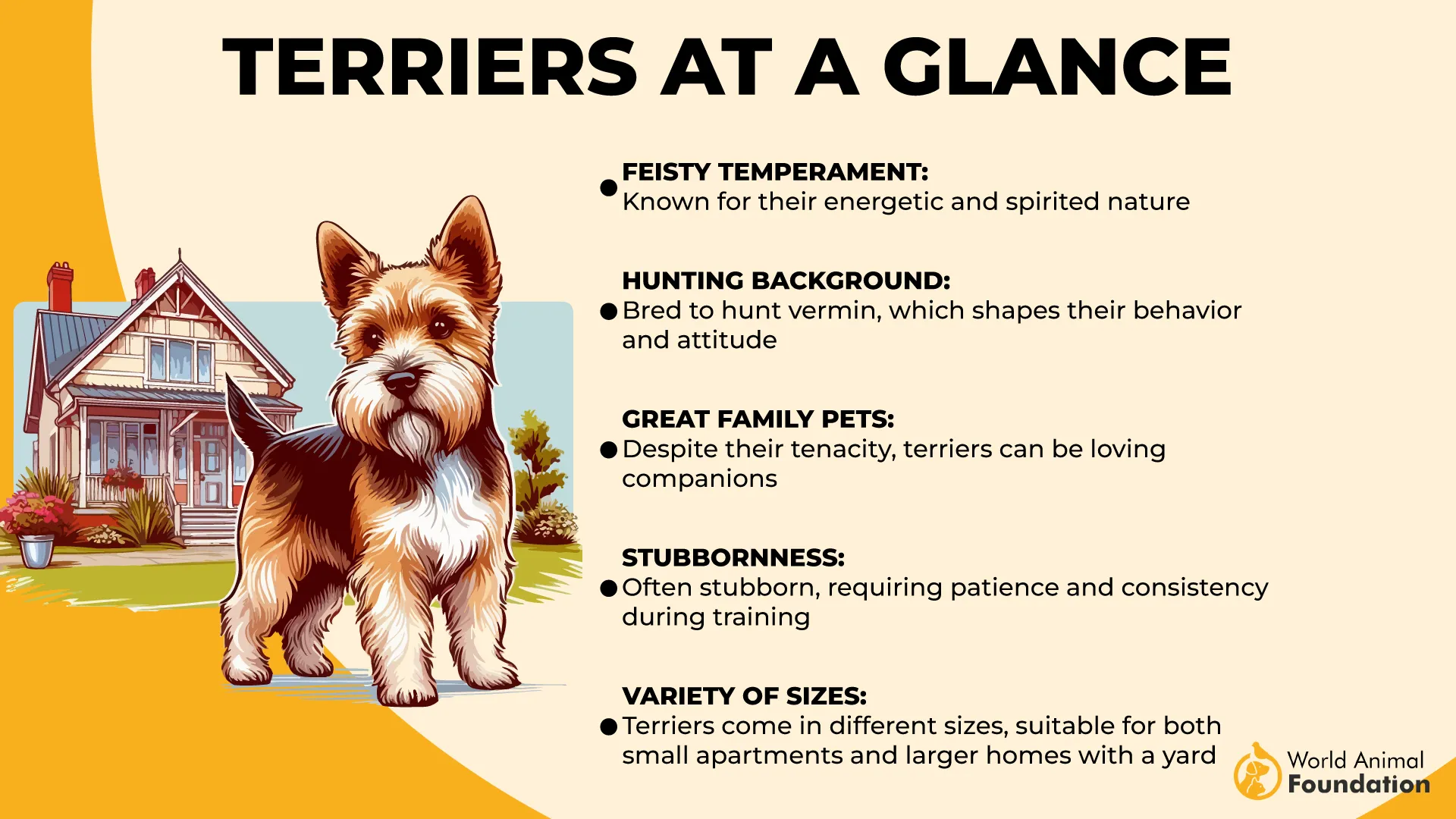
Norfolk’s crave activity. Daily walks and interactive play are musts, whether you’re in the city or the suburbs. Keep them leashed or in a secure yard—they’ll chase after scents like tiny rockets.
Generally sturdy, they may face health concerns like heart issues, joint problems, and dental trouble. Routine checkups and a solid diet help them thrive into their teens. Looking for a loyal, lively pup with big love packed into a small frame? The Norfolk Terrier checks all the boxes.
5. Jack Russell Terrier
The Jack Russell Terrier, developed by Reverend John Russell in the late 18th century, is a clever and bold working terrier bred to flush out foxes and catch smaller prey like rats and mice. Known for their sharp minds, lively energy, and vocal nature, these compact hunters are always on the move.
Though small, Jack Russell Terriers are athletic marvels—able to jump over four times their height and climb with surprising skill. Secure fencing is essential, as these little escape artists can squeeze or leap their way to freedom in a flash. On walks, leashes are non-negotiable—anything that moves becomes fair game.
These terriers are sharp thinkers and fast learners, thriving on mental stimulation. Agility games, puzzles, and training sessions keep them engaged and out of mischief. Without enough to do, boredom sets in fast, and with it comes barking, chewing, and garden redecoration.
Purina states that Jack Russells are confident and full of sass. They adore being the center of attention and have strong personalities that shine through in everything they do. Early socialization and steady guidance help shape a dog that’s friendly, fearless, and fun to live with.
Born to chase, they need plenty of outdoor time and interactive play. Their high prey drive means small pets need close supervision, but with early training, harmony is possible. Whether they’re sprinting after a ball or sniffing every corner of the yard, these dogs are all in.
A Polar Pup with a Record!
A pup named Bothie joined his explorer dad, Sir Ranulph Fiennes, on expeditions to both the North and South Poles. Yep, Bothie is the only dog in history to reach both icy extremes—and he did it all in a cozy red coat and matching boots. Talk about a four-legged adventurer!
6. Dachshund
With their iconic long bodies and stubby legs, Dachshunds—also known as Doxies—are unmistakable. Originally bred in Germany for badger control, these bold little dogs were made to burrow and chase, not just sit pretty.
Though compact, Dachshunds are fearless and independent thinkers. They love to follow their nose, often ignoring commands when a scent grabs their attention. But with regular exercise and stimulation, they become devoted, cuddly companions who’ll happily take over your lap.
They come in three coat types—smooth, longhaired, and wirehaired—each with its own charm. You’ll also find them in two sizes: Standards (16–32 pounds) and Minis (under 11 pounds), both equally full of attitude.
That charming long back, however, requires special care. Britannica states they’re prone to spinal issues like intervertebral disc disease (IVDD), so it’s best to limit stairs and jumping. Keep them fit and active to support their spine and prevent injury.
Whether you choose a sleek, scruffy, or fluffy version, a Dachshund brings bold spirit and big personality in a low-slung package. Handle with care, love them hard, and they’ll return it tenfold.
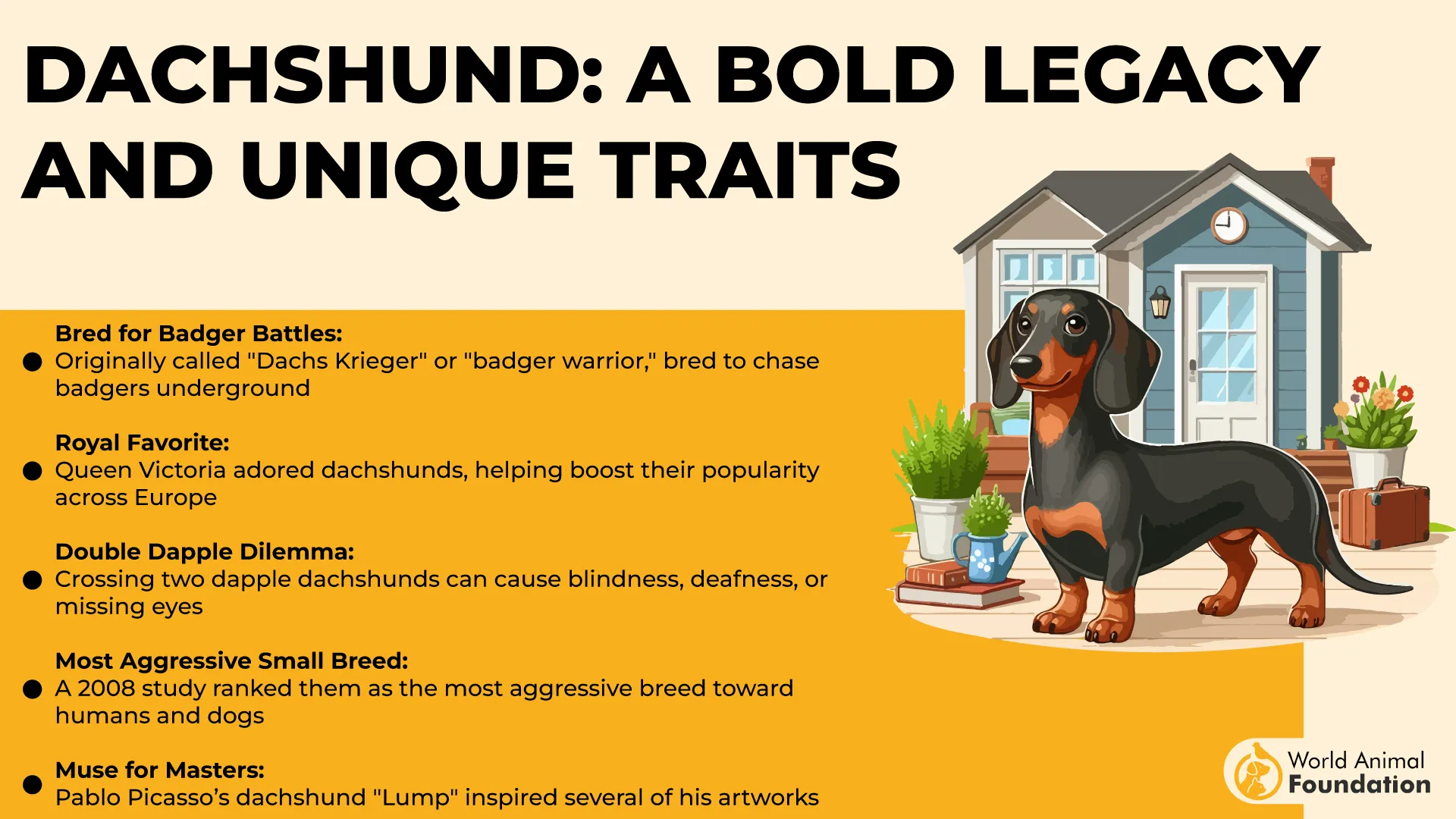
Did You Know?
Back in 1972, the Olympic Games in Munich had their first-ever mascot—and it was none other than a Dachshund named Waldi! This rainbow-colored pup was more than just cute; the marathon route was even shaped like his long, lovable body. Leave it to a Doxie to steal the show at the Olympics!
7. German Pinscher
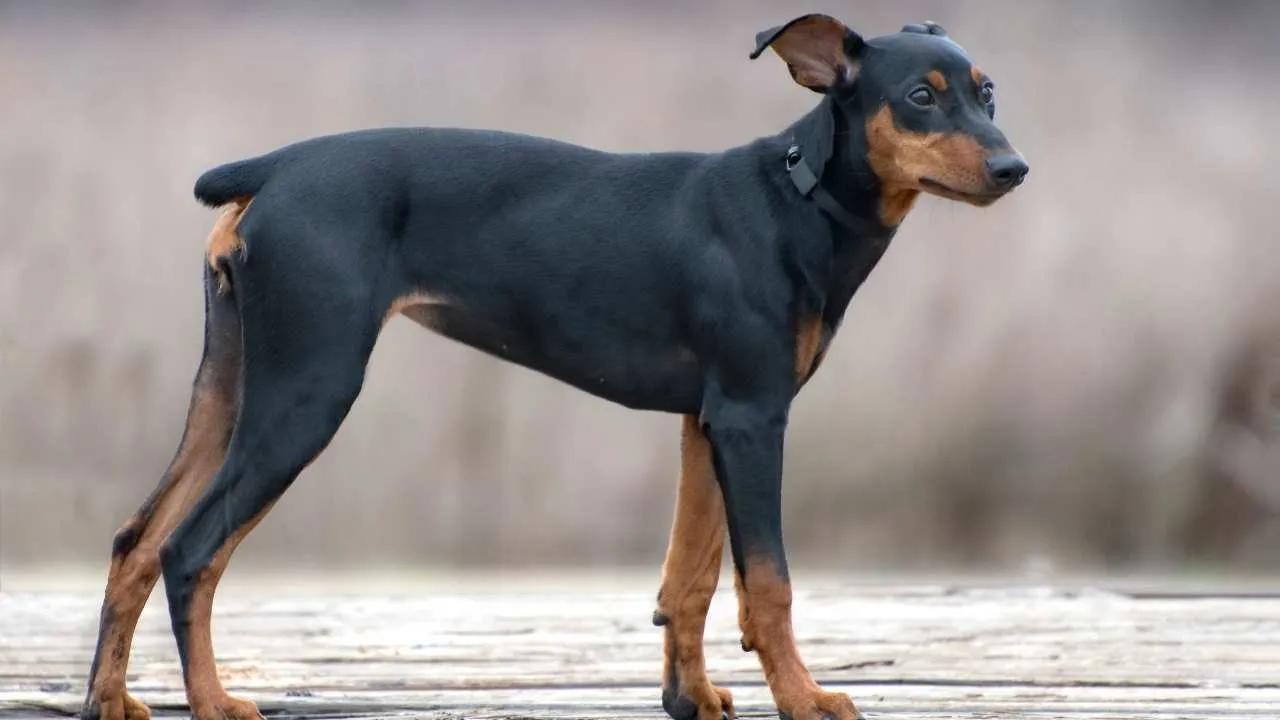
Meet the German Pinscher—a sleek, spirited breed originally developed in Germany to guard property and control vermin. After nearly disappearing post–World War era, the breed was revived thanks to enthusiast Werner Jung and his devoted dog, securing its place in the modern world.
Often mistaken for a mini Doberman, the German Pinscher stands 17–20 inches tall and weighs 25–45 pounds. But while smaller, they’re just as athletic and driven. Energetic and alert, they thrive on interaction and enjoy being part of everything their family does.
Smart, spirited, and a little cheeky, they love games, brisk walks, and mental challenges. Training should be consistent and upbeat—they respond best to positive reinforcement. Naturally protective, they’re not frequent barkers but won’t hesitate to sound off when something’s amiss.
Affectionate with their people, they’re quick learners who crave praise and mental engagement. A secure yard is essential due to their prey drive, and early socialization helps them adjust to other pets.
They can be wary of strangers and prefer calm leadership. While not ideal for households with toddlers, they do well with older, respectful kids.
Fun Fact:
The word “Pinscher” literally means “to nip or seize” in German—a nod to their quick, precise style of dispatching vermin. These ratters were farm essentials back in the day and still carry that same focused energy today.
8. Lakeland Terrier
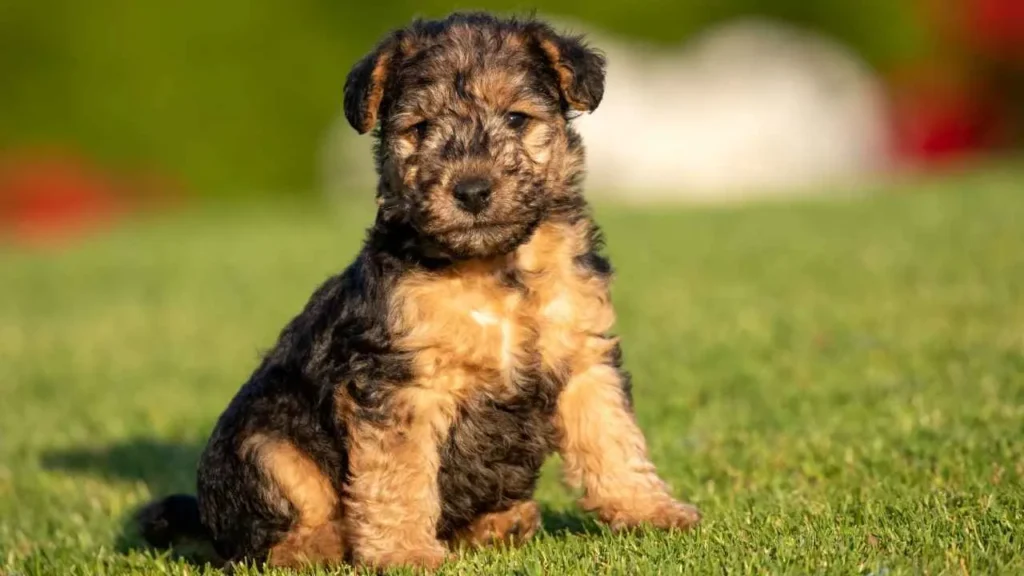
Hailing from England’s scenic Lake District, the Lakeland Terrier is a bold, energetic little dog bred to chase foxes and otters through rugged terrain. Once known as the Patterdale Terrier, this compact breed resembles a mini Airedale with its wiry coat, often black and tan, and a feisty personality to match.
Small but fearless, Lakelands are full of curiosity and confidence. They’re playful, clever, and a bit headstrong, which adds to their charm. While quick learners, they need early socialization and firm, positive reinforcement to balance their independent streak.
Naturally active, they thrive on daily exercise—think brisk walks, hikes, or fetch sessions. They excel in agility and tracking, thanks to their keen senses and energy. Because of their prey drive, always keep them leashed or in a secure yard to avoid spontaneous chases.
Training a Lakeland takes creativity and patience. They dislike repetition, so sessions should be fun and varied. Reward-based methods work best—think puzzles, trick games, and short challenges that keep them engaged and motivated.
A Hardy, Historic Breed at Risk
Surprisingly, this vivacious breed is considered one of the world’s oldest terrier breeds—and sadly, one of the rarest today. Despite their robust health and lack of major hereditary issues, Lakeland Terriers are now at risk due to low breeding numbers.
9. Norwich Terrier
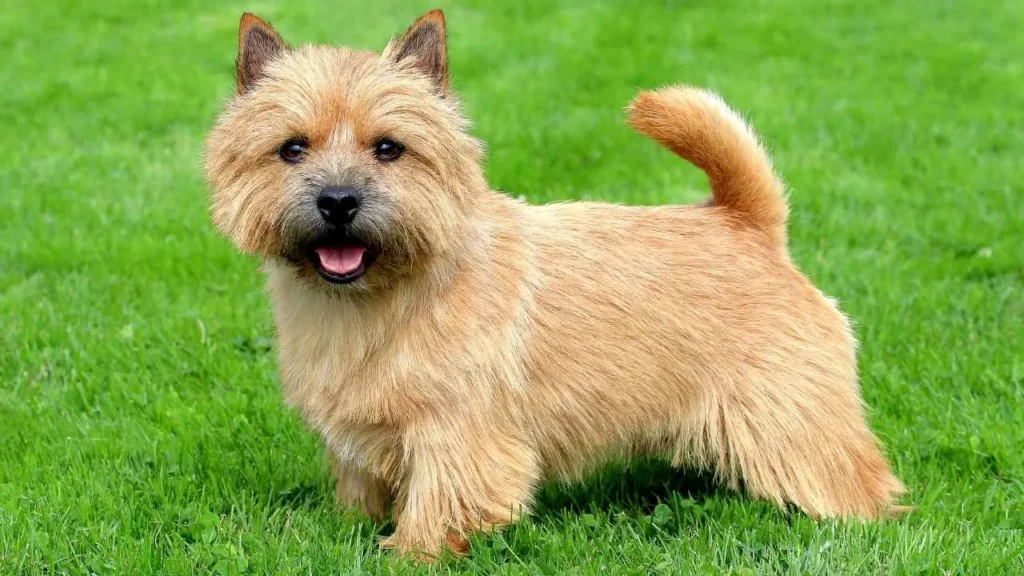
Don’t let its small size fool you—the Norwich Terrier is pure terrier through and through. With its fox-like face, alert eyes, and distinctive prick ears, this tough little dog sports a wiry, weather-resistant coat built for work. That determination still shines in their lively spirit.
Cheerful and curious, Norwich Terriers thrive on being involved. They love chasing balls, tagging along on outings, or keeping a close watch at home. Sociable by nature, they usually get along well with kids, other dogs, and some pets, especially with early socialization.
Adaptable and energetic, these pups fit comfortably in apartments or rural settings, as long as they get plenty of exercise. Their keen noses often lead them on adventures, so leash walks or secure yards are essential to keep them safe.
Stubborn yet eager to learn, Norwich Terriers respond best to short, engaging training sessions with tasty rewards. They excel in activities like agility and earthdog trials, loving any job that challenges their clever minds.
Without enough stimulation, they can turn mischievous, chewing, or digging to burn off excess energy. These dogs prefer close companionship and aren’t suited to long periods alone. If you want an active, spirited companion, the Norwich Terrier is a lively choice.
Conclusion
Rat hunting dog breeds have long been valued as excellent hunters, skilled at catching rats and other vermin to help maintain hygiene levels in homes, farms, and coops. Many dogs in the hunting terrier group, such as the West Highland White Terrier (Westie), Bedlington Terrier, and others from the Scottish Highlands, gained notoriety for their relentless drive to hunt foxes, small rodents, and other quarry.
These working dogs are in demand among breeders and owners who appreciate their ability to pounce on and kill dangerous pests, often serving as a safer alternative to traps and poison. Whether chasing raccoons or hunting ground-dwelling vermin, these specific types of terriers are natural rat controllers, making them invaluable partners in pest control and ensuring a cleaner, safer life for their families.


